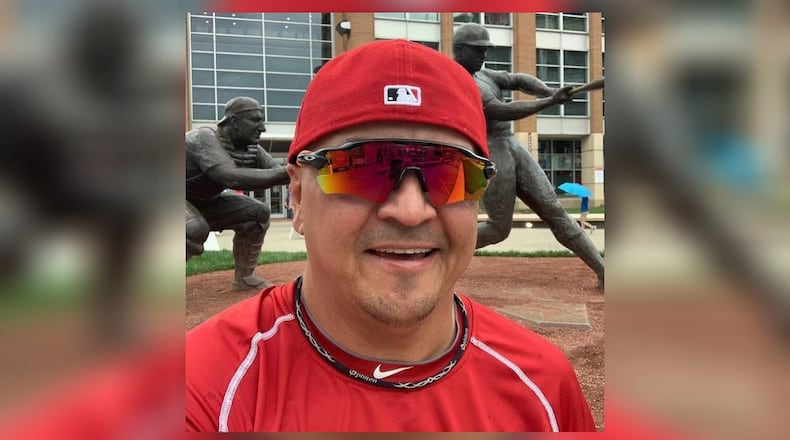Then her husband, Robert Miles, 49, an experienced rider, lost control of his motorcycle at 2:05 p.m. July 4 on Reily Millville Road. He and his wife were tossed from the motorcycle, and he was thrown into the guardrail, according to the Butler County Sheriff’s Office report.
MORE: Coroner: Fatal Butler County motorcycle crash ruled an accident
Miles, who wasn’t wearing his helmet, died from his injuries. His wife, who wasn’t wearing a helmet, suffered numerous broken bones and fractures and faces weeks of rehabilitation. But she had no brain damage.
He died from head trauma, and his death was ruled an accident by the Butler County Coroner’s Office.
This Butler County crash followed a recent trend around the state: Those who aren’t wearing helmets increase their odds of being killed in a motorcycle accident. Since 2013, 992 motorcyclists have died on Ohio roads, and 687, or 69 percent, were not wearing a helmet at the time of the accident, according to the Ohio State Highway Patrol.
In 2017, 61 percent of fatally injured motorcycle drivers were helmeted, according to the U.S. Department of Transportation. That year, 89 percent of fatally injured motorcyclists were helmeted in states with helmet laws that cover all riders, in contrast to only 31 percent in states with no helmet law. In states with helmet laws that cover only some riders, 42 percent of fatally injured motorcyclists were helmeted.
In Butler County, since 2018, there have been seven deaths involving motorcycles, said Dr. Lisa Mannix, the county coroner. In two of those fatal crashes, the person was not wearing a helmet, she said.
Helmets can reduce the risk of death and head injuries, including superficial abrasions, concussion, bleeding in the brain and skull fracture, she said. While other factors such as speed and impairment may play a role in motorcycle-related deaths, wearing a helmet can save lives, she said.
Ann Brock, trauma outreach coordinator at Atrium Medical Center, said riding a motorcycle can be dangerous and those who choose to ride without a helmet put their “life more on the line.”
When a motorcyclist is involved in an accident, since they’re not enclosed like in a car, they’re more likely to be thrown off the bike and the first thing that typically hits the pavement is their head, she said. That can lead to bleeding in the brain, which sometimes can be cured through treatment, medication or surgery, she said.
Other times, however, the brain continues to swell and becomes herniated, which leads to death.
The enjoyment of riding without a helmet doesn’t outweigh the risks, Brock said. She has heard her friends who are motorcyclists talk about the heat generated by the helmet or the weight of the helmet. Those are small prices for the safety, she said.
Miles said she and her husband typically wore helmets on long trips on the interstate, but on July 4, because it was just a 30-minute ride on back roads, they chose not to wear their helmets. She remembers leaning forward on the motorcycle, whispering something in her husband’s ear, and 10 to 15 seconds later, he said: “Oh, no.”
Still she wasn’t alarmed, she said.
Their motorcycle crossed over the yellow line, and thankfully, she said, no vehicles were coming the other direction. Then, she said, it was like her husband for some reason was unable to turn the motorcycle. She said the motorcycle started “gliding across the road.”
Then they were on the pavement, lying in pools of blood.
“Get up! Get up!” she yelled to her husband, who was about eight feet away.
She hoped for the best, thinking, “He’s fine. He’s just bleeding.”
A few minutes later, several motorists stopped and started providing medical aid. She immediately asked about her husband, though she she said she knew his fate.
“I knew it in my heart,” she said.
Then she pleaded for assistance.
“Keep me alive,” she said. “I have children.”
About the Author

